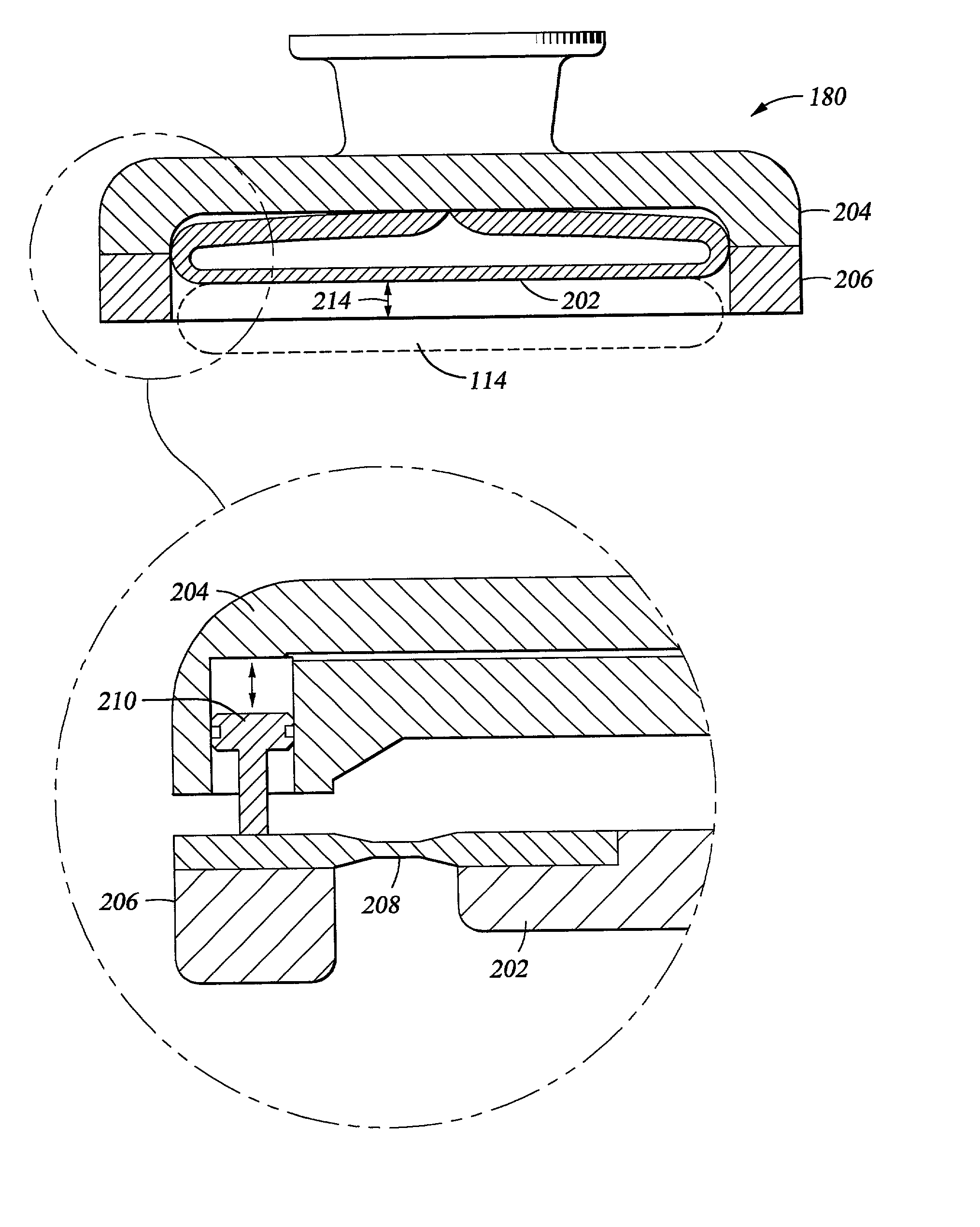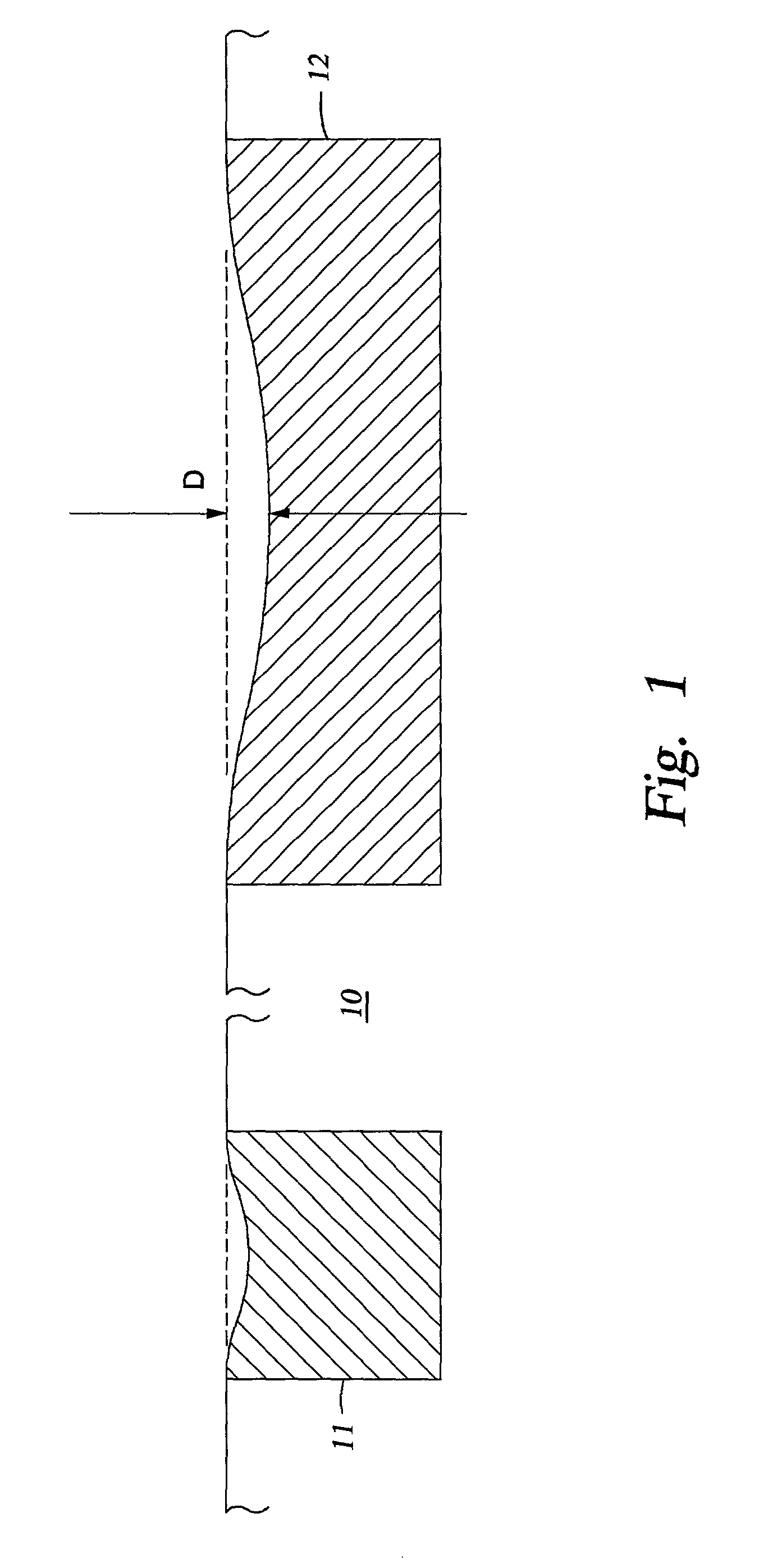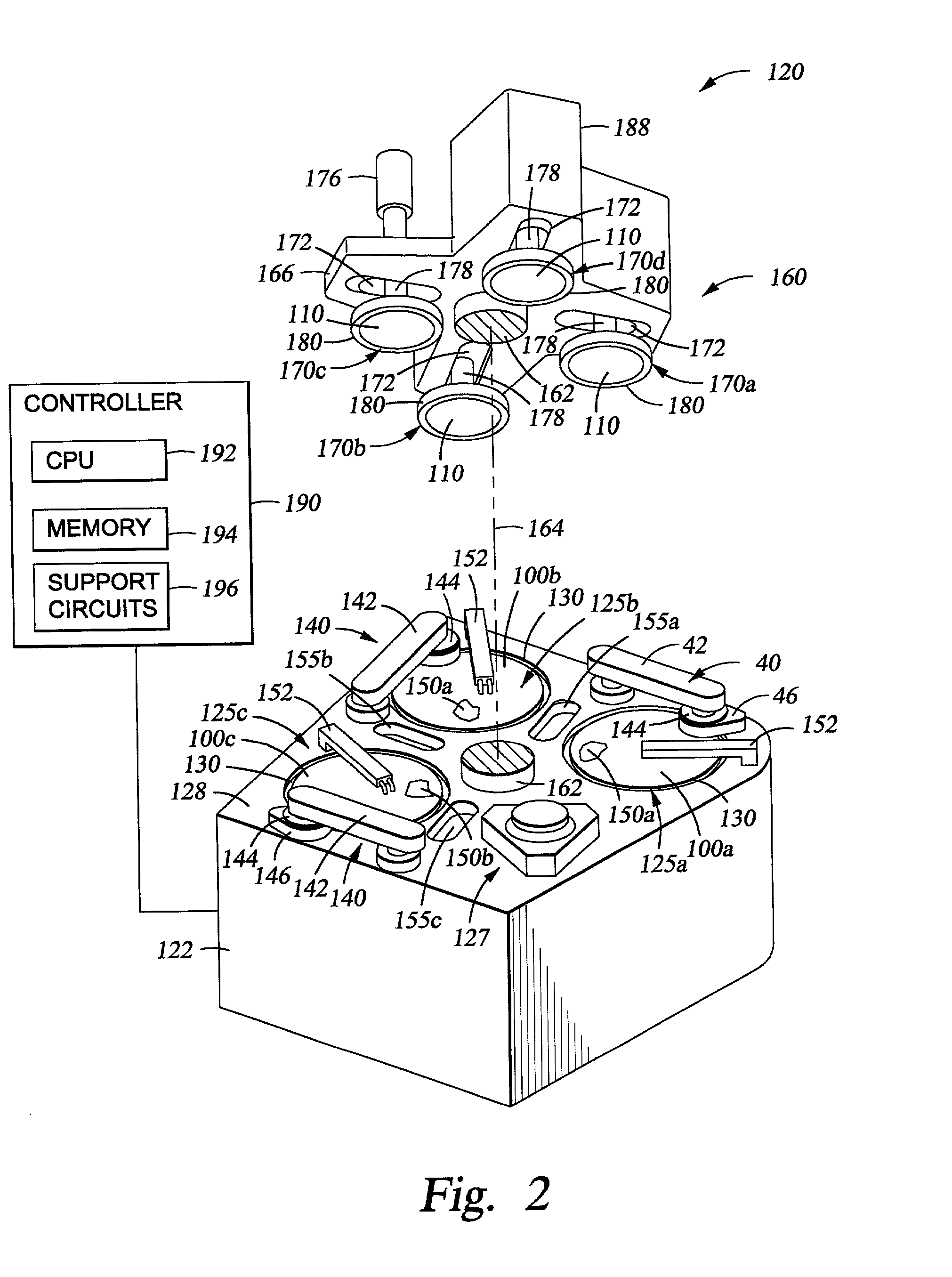Method and apparatus for polishing metal and dielectric substrates
a dielectric substrate and metal technology, applied in the field of semiconductor device fabrication, can solve the problems of capacitative coupling between, affecting the functioning of semiconductor devices, and requiring processing capabilities,
- Summary
- Abstract
- Description
- Claims
- Application Information
AI Technical Summary
Problems solved by technology
Method used
Image
Examples
Embodiment Construction
:
[0106] A series of substrates were polished according to the two-step polishing process described above in steps 300-350. A first experimental process was performed on a Mirra.TM. three platen polishing system using Cabot EPC-5001 composition on a IC-1010 polishing pad on platen 1, an Electrapolish.TM. polishing composition from Applied Materials, Inc., of Santa Clara, Calif., on a IC-1010 on platen 2, and an Electrapolish.TM. polishing composition on a Politex pad on platen 3.
[0107] The substrates polished under the processing condition shown in Table 1 below comprise a substrate stack of silicon, a first Black Diamond.TM. low k dielectric film, a BLOk.TM. low k dielectric film, a second Black Diamond.TM. low k dielectric film, a dielectric anti-reflective coating (DARC), which a feature definition was formed in the dielectric layers and filled using a tantalum nitride barrier layer, and then a copper fill of the feature definition. An example substrate may contain a silicon surfa...
PUM
| Property | Measurement | Unit |
|---|---|---|
| Pressure | aaaaa | aaaaa |
| Pressure | aaaaa | aaaaa |
| Pressure | aaaaa | aaaaa |
Abstract
Description
Claims
Application Information
 Login to View More
Login to View More - R&D
- Intellectual Property
- Life Sciences
- Materials
- Tech Scout
- Unparalleled Data Quality
- Higher Quality Content
- 60% Fewer Hallucinations
Browse by: Latest US Patents, China's latest patents, Technical Efficacy Thesaurus, Application Domain, Technology Topic, Popular Technical Reports.
© 2025 PatSnap. All rights reserved.Legal|Privacy policy|Modern Slavery Act Transparency Statement|Sitemap|About US| Contact US: help@patsnap.com



